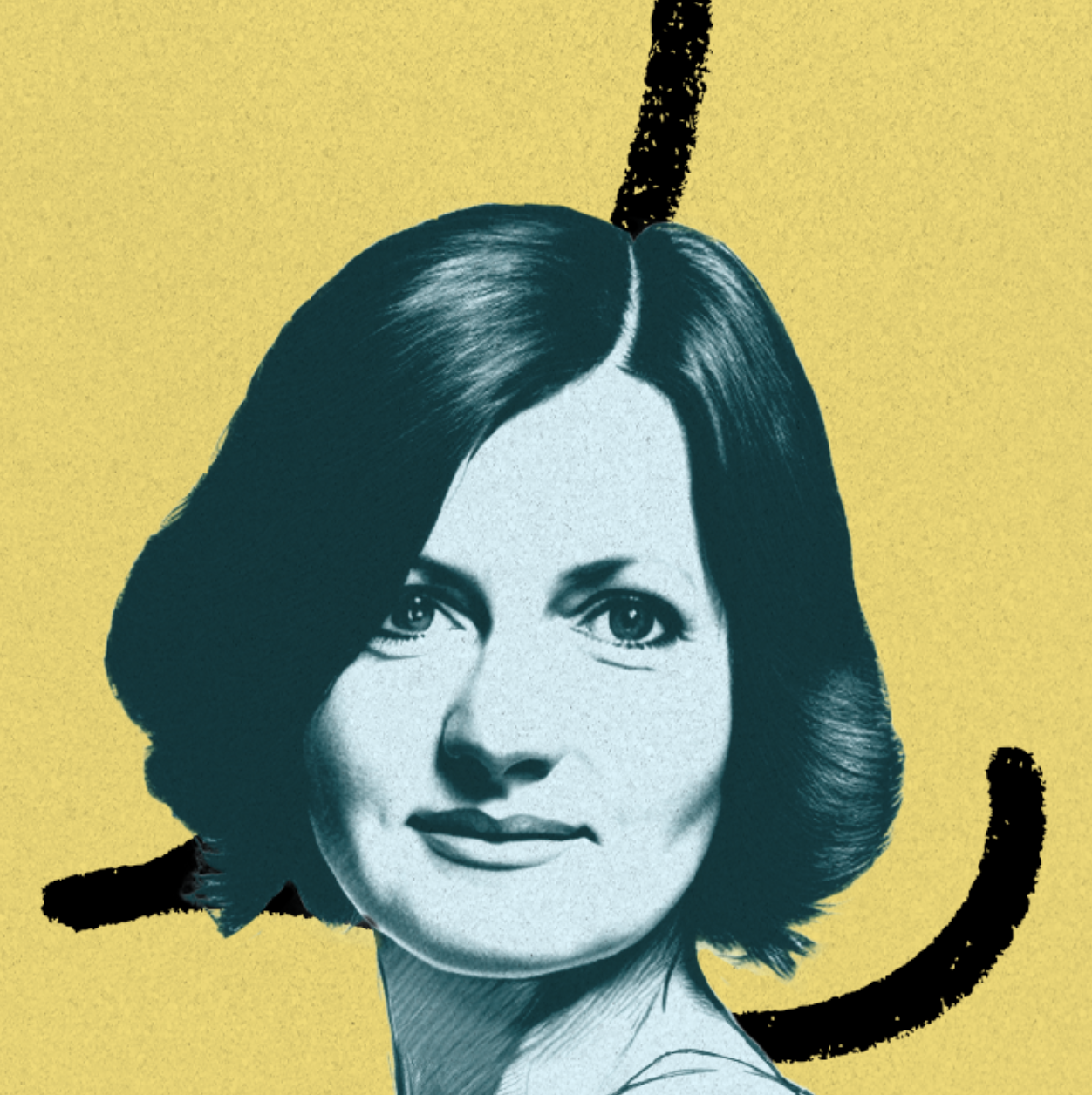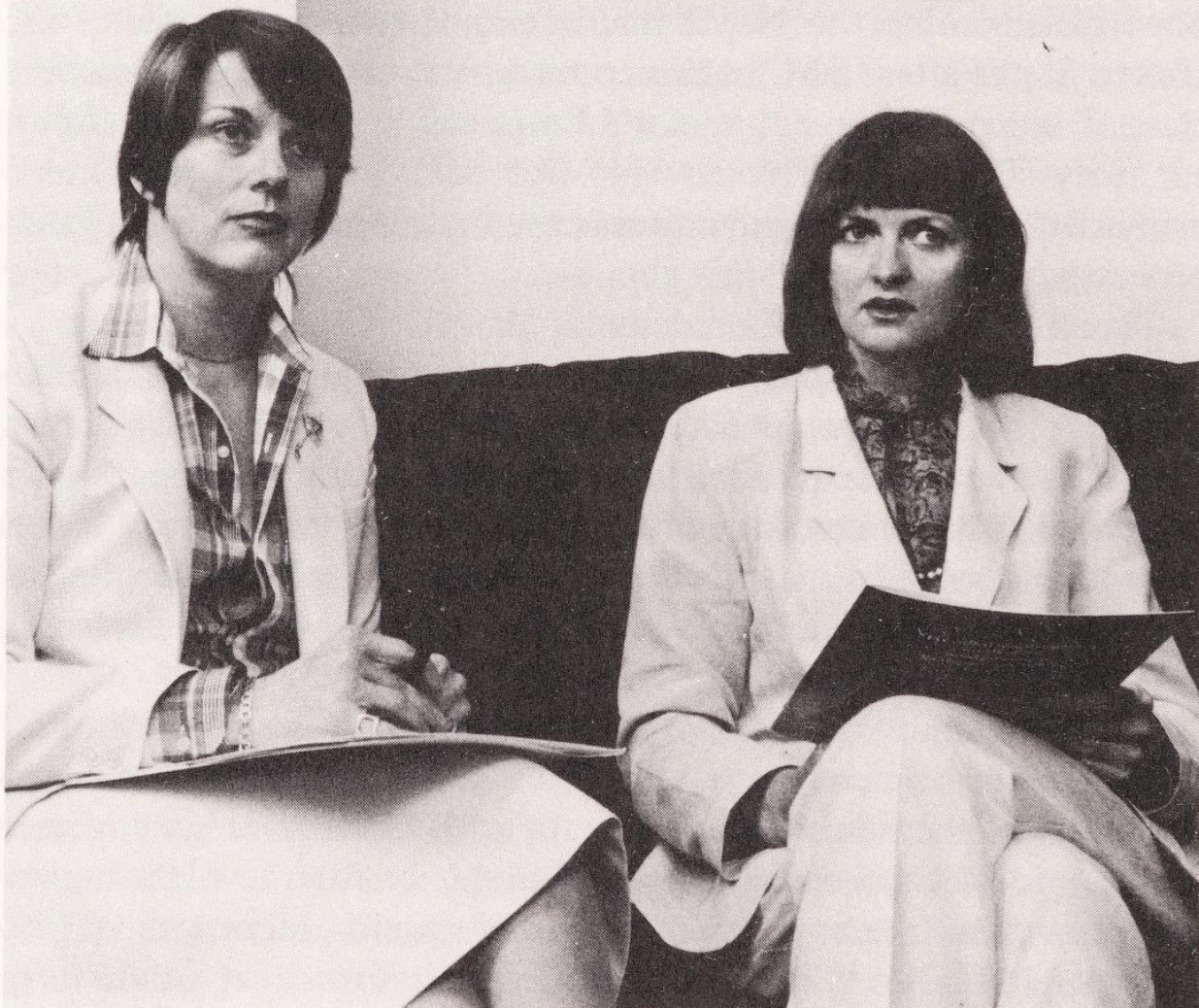
If history is written by the victors, Lore Harp McGovern should have volumes devoted to her contributions to the personal computing industry. In the mid-1970s, from her suburban California home, Harp McGovern—a housewife and mother of two—began assembling memory boards and other computer expansions to sell to the growing hobbyist and business markets. With her friend Carole Ely, she grew their company, Vector Graphic, into a major manufacturer of microcomputers, eventually taking it public before Big Blue—IBM—muscled into the market. In the latest installment of his column The Crazy Ones, Gareth Edwards tells the untold story of one of the last remaining original founders of Silicon Valley.—Kate Lee
London. 1981. A young, smartly dressed woman watches from the sidelines as a stage is prepared. Everyone is there to hear about a hotly anticipated IPO out of Silicon Valley. An investor approaches the woman and asks for a coffee refill from the table behind her. Her train of thought broken, she looks up at him. For a second, she holds his gaze. Then she turns and pours him a coffee. A few minutes later, the host announces that the CEO is ready to speak.
Tucking her short brown hair behind her ears, the same young woman straightens her suit and walks confidently up onto the stage. A murmur of surprise spreads across the room, which soon gives way to polite applause. She nods in acknowledgement, her eyes scanning the audience, searching.
“My name is Lore Harp, CEO and founder of Vector Graphic,” she says, her accent a mix of German and Californian. She locks eyes with the investor who asked her to refill his cup. “Sir, do you need me to get you any more coffee?”
The crowd looks at the embarrassed investor. He shakes his head.
“Good,” Lore Harp says with a thin smile. “Let’s continue, then, shall we?”
This is the story of Lore Harp McGovern, founder of Vector Graphic. With her friend Carole Ely, she launched a multimillion-dollar computer company from her suburban home and became one of the most important founders of the microcomputer age. It is based on contemporary accounts in publications such as the Harvard Business Review, Interface Age, Kilobaud, Time, and the Los Angeles Times, as well as books such as Women, Technology and Power by Marguerite Zientara; Future Rich by Jacqueline Thompson; and The Untold Story of the Computer Revolution by G.H. Stine. It is also based on the words of Lore Harp McGovern herself.
‘You can do anything you want’
Like many of Silicon Valley’s pioneers, Harp was an immigrant. Born Lore Lange-Hegermann, she grew up in Bottrop, Germany amid World War II, where she shared a bombed-out building with her parents and grandfather, Hermann Lange-Hegermann.
Lange-Hegermann had been a businessman and politician during the pre-war Weimar Republic, but the rise of Hitler and the war had cost him his political career and much of his business empire. He believed in the importance of a proper education for all of his children and grandchildren, regardless of gender. As a result, Lore grew up watching her aunt become a successful lawyer and her father take over what remained of her grandfather’s businesses.
Lore’s grandfather was her biggest influence. “I remember, as a seven-year-old, getting a little book from him,” she recalled later in an interview with the Computer History Museum. “In my child’s mind’s eye, it was gigantic. And it was a photographic book of people from all over the world in their native costumes, their traditions and all this. And I was so enthused about the book that I said, ‘I will see all these people!’”
“You can do anything you want,” her grandfather responded.
What her family hadn’t entirely grasped was just how determined Lore was to achieve this goal. Smart and observant, it hadn’t taken long for her to spot that reality didn’t always match the ideal. Her mother was a talented photographer and had studied the subject in college, but society expected her to become a housewife, which she did. So while Lore studied hard, she also watched for an opportunity to do something different. In February 1964, one of her friends pulled out of a planned six-month exchange visit with an American family. It was the opportunity Lore had been waiting for. She went instead.
A land of opportunity
On February 8, 1964, Lore Lange-Hegermann arrived in Santa Cruz, California. She was 19 years old and had promised her family that she would only stay for six months.
Six months later, to her parents’ surprise and disappointment, Lore sold her return ticket to West Germany and hitchhiked to Mexico. After that, she headed to San Francisco. When her tourist visa expired, she became undocumented, unable to officially work. She crashed in a shared house with four other women and took off-the-books jobs to pay rent and survive, while immersing herself in the growing sixties counterculture.
During this time, she met Bob Harp. Bob was a young computing researcher and engineer whose talents had secured him a well-paid role at a prestigious research institute in Germany. On his return to the U.S., his path crossed with Lore’s. She was attending a friend’s party when a British sports car roared up outside. It was Bob.
Bob was as outgoing as he was brilliant, and the two soon fell into conversation. The fact that Bob had broader horizons than most of his peers and spoke fluent German, thanks to his time in Europe, also helped. He made an instant impression on Lore, and she on him. It wasn’t long before they began dating and fell in love. When he was offered a research job at the California Institute of Technology, she agreed to go with him. For the next year, the pair enjoyed living a bohemian life in Los Angeles, until the inevitable happened—immigration services caught up with Lore. Threatened with deportation and summoned to an interview, the couple hatched a plan.
“I put on my little black shift dress,” Lore later said. “My hair was down. I put it in a big bun. I put on my pearl necklace, my father’s gold bracelet, my grandmother’s ring. I sat there like Miss Prim and Proper. And we said, ‘Oh, we just got engaged, and we’re getting married.’”
And they did. Lore Lange-Hegermann became Lore Harp. “We found some minister in our neighborhood, and then we went to McDonald’s and had a hamburger.”
The gilded cage
While Bob had worked at Caltech, Lore was able to immerse herself in the flourishing local art community. But over time the gears of his career began to turn. In the early seventies, Bob was offered a better-paid aeronautical research role at Hughes Research Laboratories, which he accepted. For Harp, this meant leaving vibrant Los Angeles for a more traditional suburban life in Westlake Village, California. “We moved from there to way out in the boonies,” Harp recalled. “Westlake Village which is…oh my God.”
By 1975, this lifestyle had begun to take a toll on her mental health. Harp had stayed in America to escape a future where her only option was to be a housewife.Yet in Westlake Village, this was the only role it seemed possible for her to play. While Bob worked, she was required to manage the home and join the various women’s groups and their activities like charity fundraisers and dinner parties—obligations expected by her community and Bob’s employer. To try and prevent this from taking over her whole life, she started studying anthropology. But then she became pregnant with their first child and was forced to abandon her studies. A second—another daughter—followed two years later. When the children were three and five, Harp tried to pursue school again, this time hoping to follow in her aunt’s footsteps and become a lawyer. But law school was not friendly to young mothers.
“My husband was not the kind of person who would take over half the chores while I studied, even though he was otherwise supportive,” she said. Forced to quit, Harp felt frustrated and isolated. The social activities that seemed to provide a sense of value and purpose for many of her neighbors just didn’t feel satisfying for her.
“I was 32 at the time, and I felt…‘My God, suddenly I’ll be 40, the children will be gone, and where am I going to be?'”
The product
Harp first met Carole Ely while they were waiting to pick up their children from school. Ely had started a promising career as a bond trader when marriage and children intervened. Now, like Harp, she was stuck living the life of a Westlake Village housewife. She, too, felt caged.
The duo talked about starting a business together. Their first idea was a travel agency. However, the travel industry in California was one of entrenched interests—when it came to securing partnerships and permits, who you knew mattered just as much as how good your product was. Networking required membership of the kind of business and social clubs that would never allow two women like Harp and Ely to join.
Then, in January 1975, Popular Electronics published a picture of the Altair 8800 on its cover. Bob Harp, like many who worked with large computers in their workplace, had never imagined that he might one day own a machine of his own. He placed an order for the Altair, which was billed as the world’s first mass-market “microcomputer.” When the machine arrived in kit form, Bob quickly assembled it and it became one of his obsessions. The Harp house was soon filled with pamphlets, newsletters, and how-to guides about microcomputers, and Bob discovered, to his delight, that the Altair’s creator Ed Roberts had built it around a principle of “open architecture” via its S-100 expansion socket. Anyone could create memory boards or peripherals that could expand the functionality of the machine . A few third-party expansions were already on the market and more were being released regularly, but Bob decided it would be more interesting (and a fun test of his skills) to design his own expansion board. Over the course of a few months, he created a board for his own use, one that would double the amount of RAM in his Altair from 4K to a mighty 8K.
While Bob was at work, Harp would read the computing materials that littered the house. Dinner table conversations would routinely include discussion of the latest trends in technology. Through a form of osmosis, she became versed in the growing computer industry herself. “[Bob] was reading tech publications all the time, and I kind of read them as well, and looked at them, and saw what was going on,” she said.
Harp decided that Bob’s 8K RAM board was the opportunity that she and Ely had been waiting for. They would make and sell them from home. In return, Bob would receive a royalty payment on every sale. She called her prospective business partner and asked her if she wanted to team up and sell memory boards.
“Sure,” Ely replied. “What’s a memory board?”
Two days after that phone call, Lore Harp and Ely attended the Southern California Computer Society’s monthly show. They were there to scout out their potential market. They watched vendors try to sell bags of chips and parts for memory boards and other expansions, often with poorly composed hand-written instructions on how to build them. The whole operation seemed distinctly amateur, yet it seemed to work. Attendees would hand over bundles of money—sometimes as much as $1,000 (about $5,000 today)—in exchange for these products.
Two days later, on August 23, 1976, Vector Graphic was incorporated. Its head of marketing was Carole Ely. Lore Harp was the CEO.
Carole Ely (left) and Lore Harp. Source: Vector Graphic.
The deal
“It’s Lore Harp from Vector Graphic. We have a new memory board and need about 50,000 chips.”
Harp was seated in the family room of her Westlake home on the phone with a sales representative at chip manufacturer AMD. The company was one of a small number of independent U.S. chip manufacturers that were prepared to supply third parties. Harp and Ely needed these chips so they could package them into kits in Harp’s house and sell them as memory board kits.
“Oh!” The sales representative on the other end of the phone sounded keen. “I’d be happy to come to your office to discuss it.” Harp looked around the room and across to the kitchen beyond, where a large pot of stew was cooking on the stove.
“We’d love to meet you in our office, but we’re in the middle of moving,” she replied, thinking on her feet. Harp told the representative they were in Westlake and suggested they meet at the Westlake Inn. The sales representative agreed. After calling Carole and telling her the news, Harp called Bob at work.
“You’ve got to get home from Hughes,” she told him. “You’ve got to be here at a quarter to five to care for the kids. We have to go meet a guy from AMD.”
The memory of that first meeting was seared into Harp’s brain. “He had these little monogrammed cufflinks and that aftershave everybody had. Some Old Spice thing,” she remembered about the salesman later. “And he gave us this up-and-down look. I never forget this.”
The three of them sat down in the hotel’s restaurant area and tried to negotiate a deal. Harp told the man from AMD that they planned to manufacture memory boards and sell them to the growing hobbyist market. The salesman nodded along, then gave them a price. It was far too high. “He didn’t even know what an Altair was,” Harp said. As a result, he didn’t believe their assertions that there was a large enough market for their product to make a discount worthwhile. They refused AMD’s terms.
Not to be deterred, Harp called Fairchild Semiconductor, another major chip manufacturer. Once again, it led to a meeting at the Westlake Inn.
“You know what,” the Fairchild representative replied after Harp had explained their plan. “I’ll help you.”
Now Harp took her biggest gamble. They didn’t have enough money to pre-pay for the chips, so she decided to be honest.
“We will pay within 30 days because we cannot afford to prepay,” she told him. Harp knew that they’d need to sell enough boards first to cover the cost. “We promise we’ll pay in 30 days or before.”
The Only Subscription
You Need to
Stay at the
Edge of AI
The essential toolkit for those shaping the future
"This might be the best value you
can get from an AI subscription."
- Jay S.
Join 100,000+ leaders, builders, and innovators

Email address
Already have an account? Sign in
What is included in a subscription?
Daily insights from AI pioneers + early access to powerful AI tools








.50.43_AM.png)
Comments
Don't have an account? Sign up!
Lore Harp McGovern—I’m delighted to know her name and her story. It seems to me her impact extends far beyond tech; the way she treated her employees and the demands she made and won on their behalf were incredibly progressive and maybe even more threatening to the status quo than her business savvy. What an inspiring human being! This is a truly remarkable story, beautifully told. Would love to see it on the big screen. Thank you, Gareth!
Brilliant to hear about a female founder for once!
wonderful story telling Gareth! And what a story. What an incredible woman.
What an amazing story! It is painful to see how she was treated and to what extent she was erased from the IT industry history books. Steve Jobs, Osborne, Wozniacki, all the usual (male) suspects but not this amazing woman (and these amazing women) who created the equivalent of a billion-dollar company as housewives. Also, so many lessons here on identifying market failures, filling them in as a to-to-market strategy, bootstrapping in action, partnering, etc. It feels like they were just completely-failed by the bro culture of SV. Happy to read that Microsoft was happy to deal with them, at least one white hat in a forest of black hats. Kudos for this very insightful history/story/business case!
Great story, one I never heard before. Thank you.
Minor quibble: I suspect the part about 8k versus 16k was meant to be about 8 bit versus 16 bit, a transition definitely underway at the time and related to the PC compatibility question as well.
@tommybgoode well spotted! Thanks for that. Fixed.
A compelling read, tribute, and heartfelt narrative 🙏💖👌📸